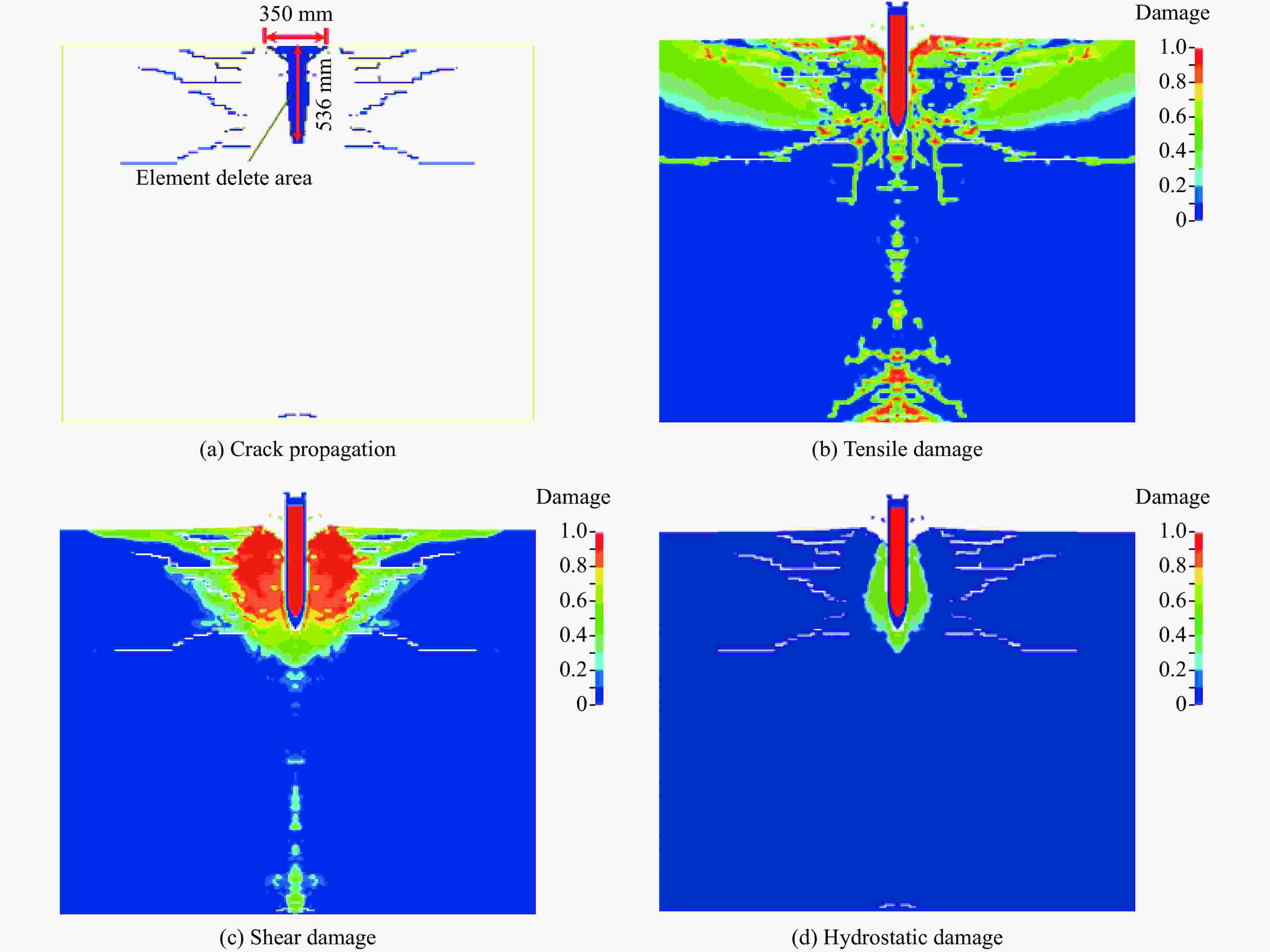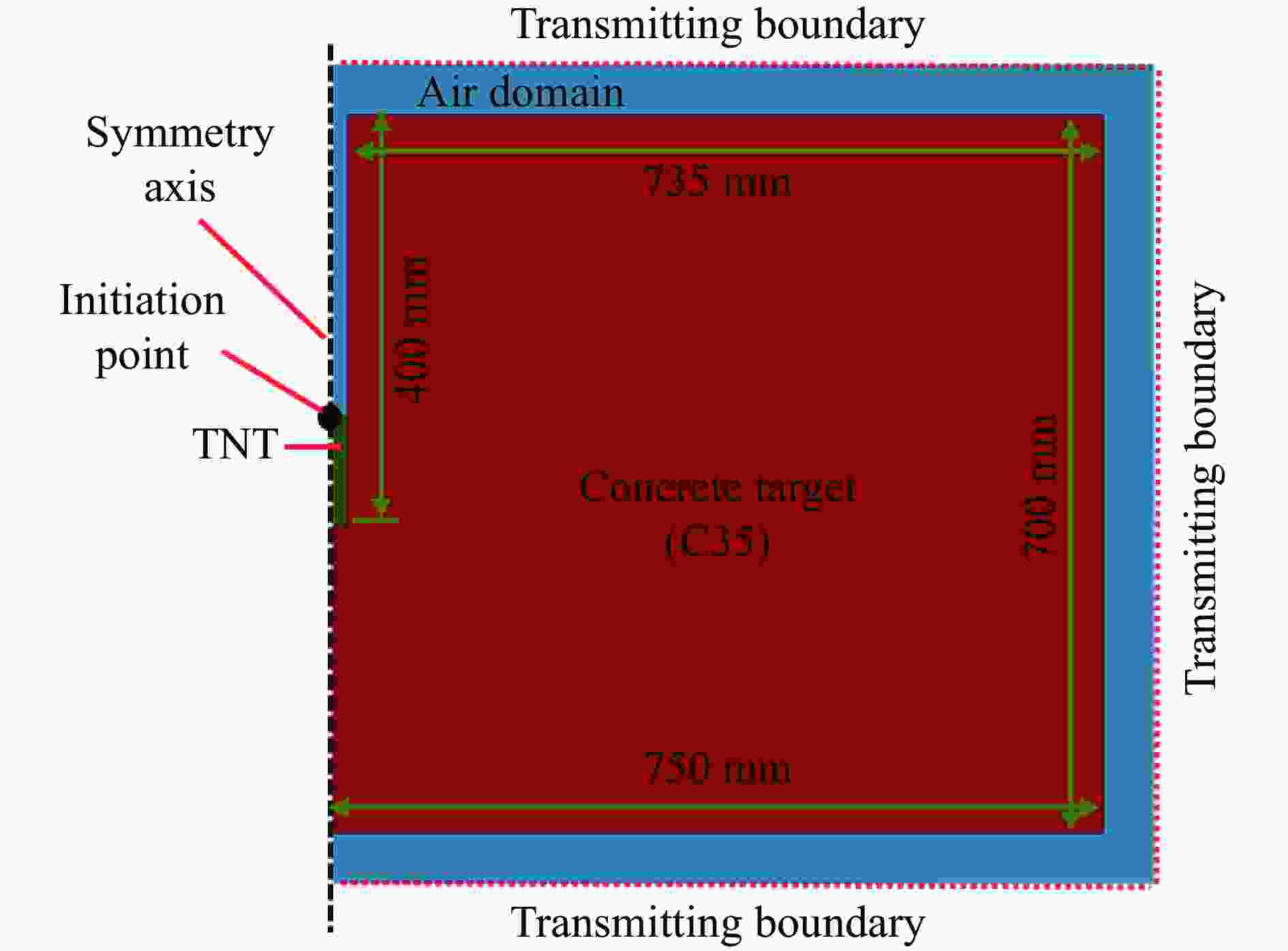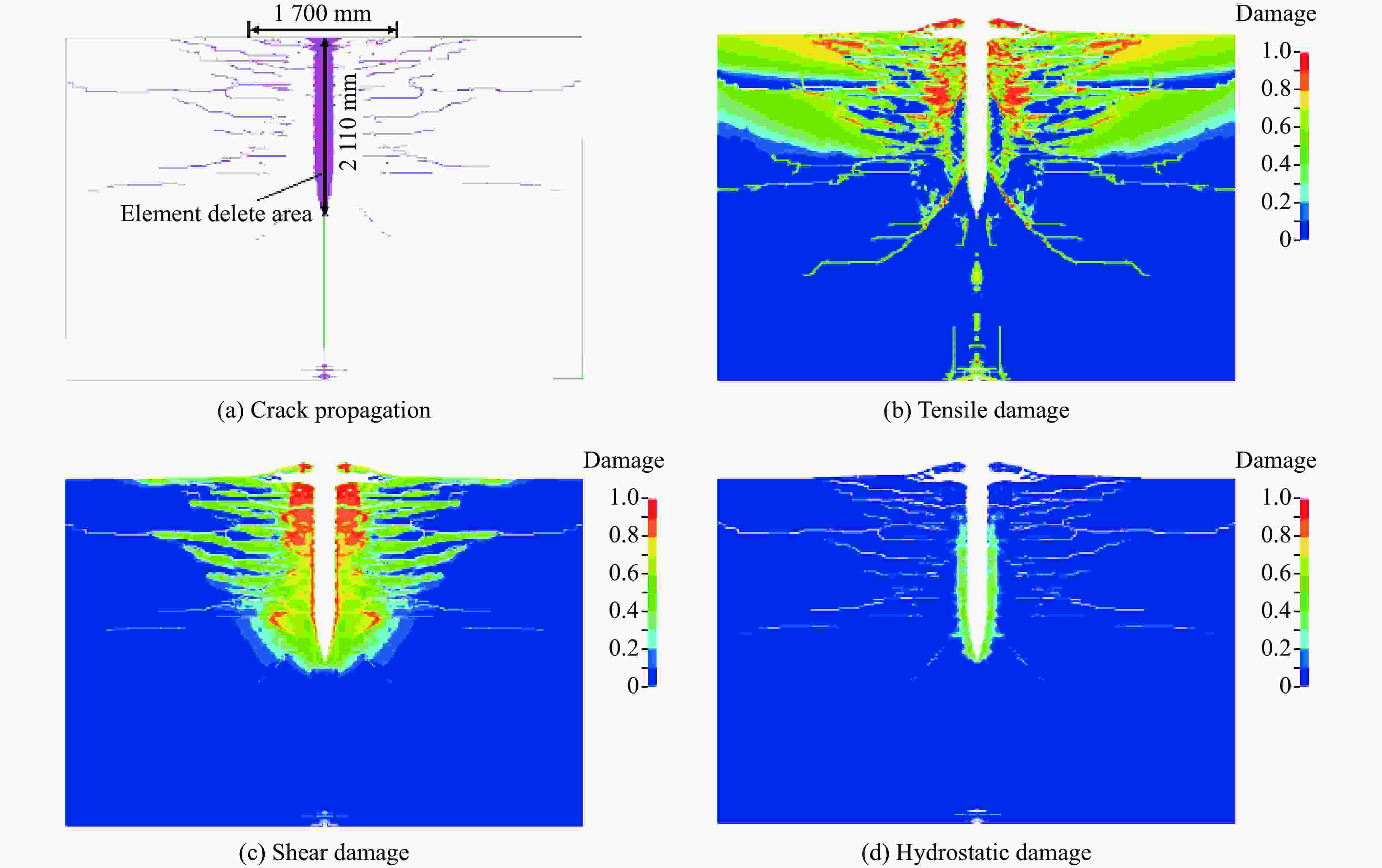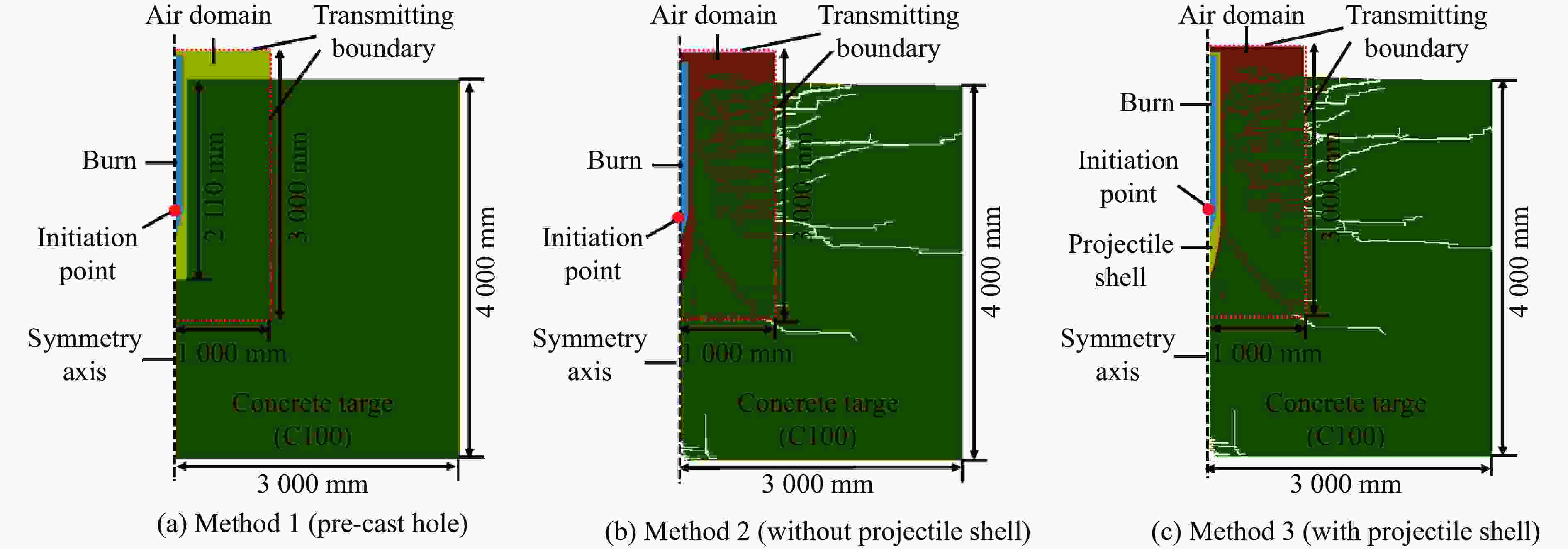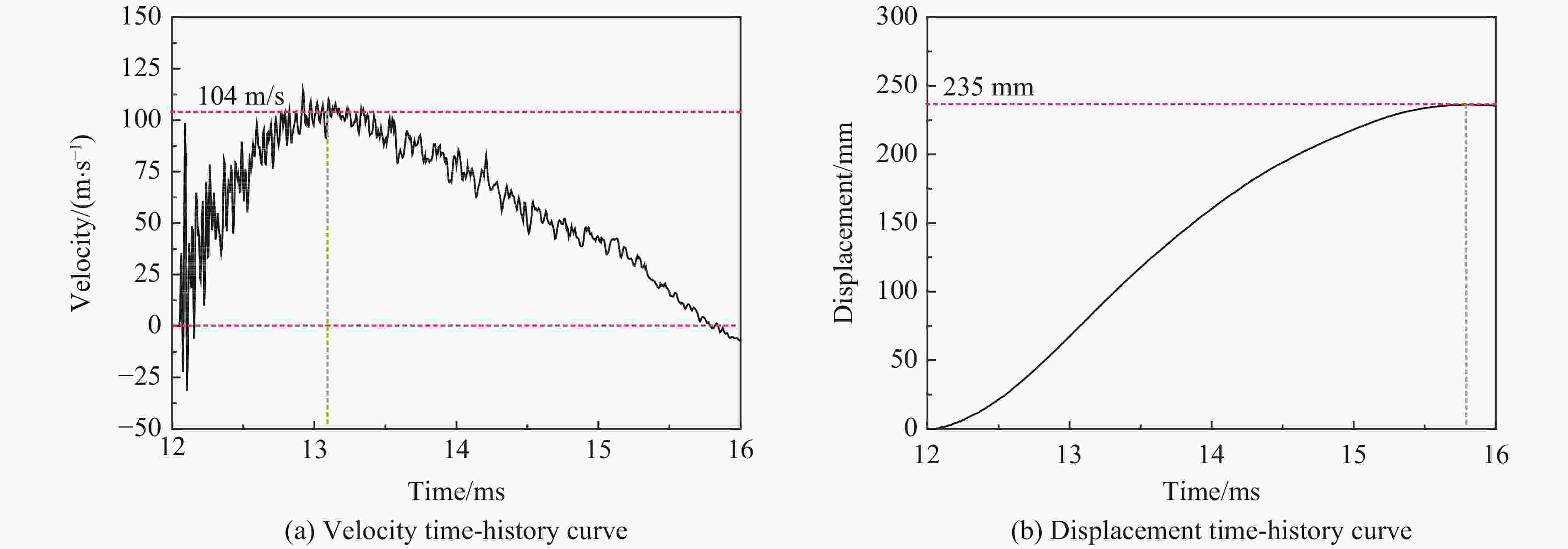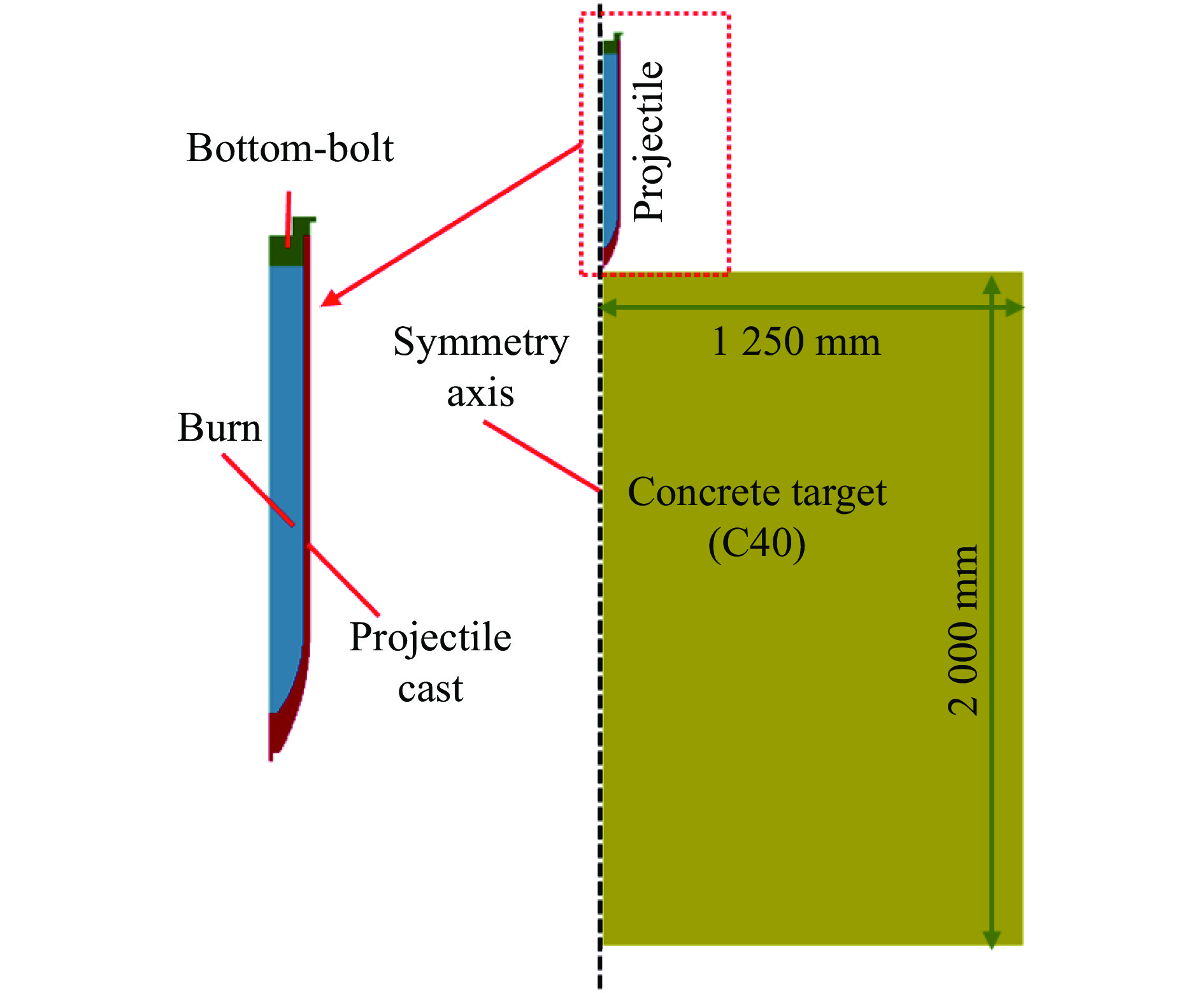| [1] |
FANG Q, WU H. Concrete structures under projectile impact [M]. Singapore: Springer, 2017: 255−321.
|
| [2] |
WU H, PENG Y, KONG X Z. Notes on projectile impact analyses [M]. Singapore: Springer, 2019: 167−240.
|
| [3] |
左魁, 张继春, 曾宪明, 等. 重复爆炸条件下地冲击效应试验研究 [J]. 岩石力学与工程学报, 2007, 26(S1): 3378–3383. DOI: 10.3321/j.issn:1000-6915.2007.z1.119.ZUO K, ZHANG J C, ZENG X M, et al. Experimental study on underground shock effects under repeated explosions [J]. Chinese Journal of Rock Mechanics and Engineering, 2007, 26(S1): 3378–3383. DOI: 10.3321/j.issn:1000-6915.2007.z1.119.
|
| [4] |
左魁, 张继春, 王启睿, 等. 重复爆炸条件下岩石介质破坏效应试验研究 [J]. 岩石力学与工程学报, 2008, 27(1): 2675–2680.ZUO K, ZHANG J C, WANG Q R, et al. Experimental research on rock breakage effect under repeated explosions [J]. Chinese Journal of Rock Mechanics and Engineering, 2008, 27(1): 2675–2680.
|
| [5] |
LAI J Z, GUO X J, ZHU Y Y. Repeated penetration and different depth explosion of ultra-high performance concrete [J]. International Journal of Impact Engineering, 2015, 84: 1–12. DOI: 10.1016/j.ijimpeng.2015.05.006.
|
| [6] |
左魁, 曾宪明, 王启睿, 等. 钻地模型弹对岩石模拟材料二次侵彻试验 [J]. 解放军理工大学学报(自然科学版), 2007, 8(6): 626–629. DOI: 10.3969/j.issn.1009-3443.2007.06.012.ZUO K, ZENG X M, WANG Q R, et al. Second time penetration of earth-penetrating model projectile in rock medium [J]. Journal of PLA University of Science and Technology (Natural Science Edition), 2007, 8(6): 626–629. DOI: 10.3969/j.issn.1009-3443.2007.06.012.
|
| [7] |
左魁, 张继春, 曾宪明, 等. BLU-109B模型弹在岩石介质中成坑效应试验研究 [J]. 岩石力学与工程学报, 2007, 26(S1): 2767–2771. DOI: 10.3321/j.issn:1000-6915.2007.z1.027.ZUO K, ZHANG J C, ZENG X M, et al. Experimental study on formation of craters in rock with BLU-109B earth penetrating model projectiles [J]. Chinese Journal of Rock Mechanics and Engineering, 2007, 26(S1): 2767–2771. DOI: 10.3321/j.issn:1000-6915.2007.z1.027.
|
| [8] |
邓国强, 杨秀敏. 钻地弹重复打击效应现场试验研究 [J]. 防护工程, 2012, 34(5): 1–5.DENG G Q, YANG X M. Experimental investigation into damage effects of repeated attacks of precision-guided penetration weapons [J]. Protective Engineering, 2012, 34(5): 1–5.
|
| [9] |
梁龙河, 王政, 曹菊珍. 长杆弹对混凝土的侵爆效应 [J]. 爆炸与冲击, 2008, 28(5): 415–420. DOI: 10.11883/1001-1455(2008)05-0415-06.LIANG L H, WANG Z, CAO J Z. Damaging effect of concrete by penetration and explosion of a long-rod projectile [J]. Explosion and Shock Waves, 2008, 28(5): 415–420. DOI: 10.11883/1001-1455(2008)05-0415-06.
|
| [10] |
曾亮, 王伟力, 朱建方. BLU-113钻地战斗部侵彻爆炸联合效应数值模拟 [C]//第七届全国工程结构安全防护学术会议论文集. 宁波: 中国力学学会, 2009: 210−214.
|
| [11] |
杨广栋, 王高辉, 卢文波, 等. 侵彻与爆炸联合作用下混凝土靶体的毁伤效应分析 [J]. 中南大学学报(自然科学版), 2017, 48(12): 3284–3292. DOI: 10.11817/j.issn.1672-7207.2017.12.020.YANG G D, WANG G H, LU W B, et al. Damage characteristics of concrete structures under the combined loadings of penetration and explosion [J]. Journal of Central South University (Science and Technology), 2017, 48(12): 3284–3292. DOI: 10.11817/j.issn.1672-7207.2017.12.020.
|
| [12] |
YANG G D, WANG G H, LU W B, et al. Combined effects of penetration and explosion on damage characteristics of a mass concrete target [J]. Journal of Vibroengineering, 2018, 20(4): 1632–1651. DOI: 10.21595/jve.2017.18522.
|
| [13] |
冯春, 李世海, 郝卫红, 等. 基于CDEM的钻地弹侵彻爆炸全过程数值模拟研究 [J]. 振动与冲击, 2017, 36(13): 11–18; 26. DOI: 10.13465/j.cnki.jvs.2017.13.002.FENG C, LI S H, HAO W H, et al. Numerical simulation for penetrating and blasting process of EPW based on CDEM [J]. Journal of Vibration and Shock, 2017, 36(13): 11–18; 26. DOI: 10.13465/j.cnki.jvs.2017.13.002.
|
| [14] |
邓国强, 杨秀敏. 工程岩体中多弹重复打击效应的数值模拟分析 [J]. 爆炸与冲击, 2014, 34(3): 361–366. DOI: 10.11883/1001-1455(2014)03-0361-06.DENG G Q, YANG X M. Numerical simulation of the effect of multiply EPW into engineering rock [J]. Explosion and Shock Waves, 2014, 34(3): 361–366. DOI: 10.11883/1001-1455(2014)03-0361-06.
|
| [15] |
KONG X Z, FANG Q, CHEN L, et al. A new material model for concrete subjected to intense dynamic loadings [J]. International Journal of Impact Engineering, 2018, 120: 60–78. DOI: 10.1016/j.ijimpeng.2018.05.006.
|
| [16] |
ZHANG S B, KONG X Z, FANG Q, et al. Numerical prediction of dynamic failure in concrete targets subjected to projectile impact by a modified Kong-Fang material model [J]. International Journal of Impact Engineering, 2020, 144: 103633. DOI: 10.1016/j.ijimpeng.2020.103633.
|
| [17] |
WANG Y, KONG X Z, FANG Q, et al. Modelling damage mechanisms of concrete under high confinement pressure [J]. International Journal of Impact Engineering, 2021, 150: 103815. DOI: 10.1016/j.ijimpeng.2021.103815.
|
| [18] |
HUANG X P, KONG X Z, CHEN Z Y, et al. A computational constitutive model for rock in hydrocode [J]. International Journal of Impact Engineering, 2020, 145: 103687. DOI: 10.1016/j.ijimpeng.2020.103687.
|
| [19] |
YANG S B, KONG X Z, WU H, et al. Constitutive modelling of UHPCC material under impact and blast loadings [J]. International Journal of Impact Engineering, 2021, 153: 103860. DOI: 10.1016/j.ijimpeng.2021.103860.
|
| [20] |
HUANG X P, KONG X Z, HU J, et al. The influence of free water content on ballistic performances of concrete targets [J]. International Journal of Impact Engineering, 2020, 139: 103530. DOI: 10.1016/j.ijimpeng.2020.103530.
|
| [21] |
KONG X Z, FANG Q, ZHANG J H, et al. Numerical prediction of dynamic tensile failure in concrete by a corrected strain-rate dependent nonlocal material model [J]. International Journal of Impact Engineering, 2020, 137: 103445. DOI: 10.1016/j.ijimpeng.2019.103445.
|
| [22] |
中华人民共和国住房和城乡建设部. 混凝土结构设计规范: GB 50010−2010 [S]. 北京: 中国建筑工业出版社, 2015: 209−215.
|
| [23] |
KONG X Z, FANG Q, WU H, et al. Numerical predictions of cratering and scabbing in concrete slabs subjected to projectile impact using a modified version of HJC material model [J]. International Journal of Impact Engineering, 2016, 95: 61–71. DOI: 10.1016/j.ijimpeng.2016.04.014.
|
| [24] |
KONG X Z, FANG Q, LI Q M, et al. Modified K&C model for cratering and scabbing of concrete slabs under projectile impact [J]. International Journal of Impact Engineering, 2017, 108: 217–228. DOI: 10.1016/j.ijimpeng.2017.02.016.
|
| [25] |
MAY P I, FORMATN K. LS-DYNA® keyword user’s manual: version 971 [M]. Livermore, USA: Livermore Software Technology Corporation, 2007.
|
| [26] |
逄高伟, 方秦, 孔祥振, 等. WDU-34/B战斗部侵彻块石遮弹层的数值模拟研究 [J]. 防护工程, 2020, 42(4): 15–22.PANG G W, FANG Q, KONG X Z, et al. Numerical simulation of WDU-34/B warhead penetrating into rubble burster layer [J]. Protective Engineering, 2020, 42(4): 15–22.
|
| [27] |
RABCZUK T, BELYTSCHKO T. A three-dimensional large deformation meshfree method for arbitrary evolving cracks [J]. Computer Methods in Applied Mechanics and Engineering, 2007, 196(29/30): 2777–2799. DOI: 10.1016/j.cma.2006.06.020.
|
| [28] |
张海英, 段卓平, 刘彦, 等. 有限厚混凝土靶内部爆炸震塌贯穿研究 [J]. 北京理工大学学报, 2013, 33(5): 441–444; 550. DOI: 10.3969/j.issn.1001-0645.2013.05.001.ZHANG H Y, DUAN Z P, LIU Y, et al. Study on the collapse perforation of thick concrete targets under internal explosion [J]. Transactions of Beijing Institute of Technology, 2013, 33(5): 441–444; 550. DOI: 10.3969/j.issn.1001-0645.2013.05.001.
|







 下载:
下载:
